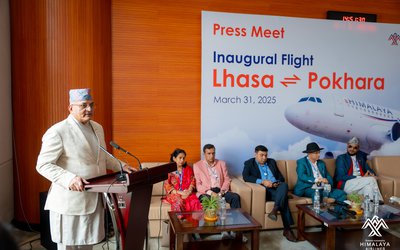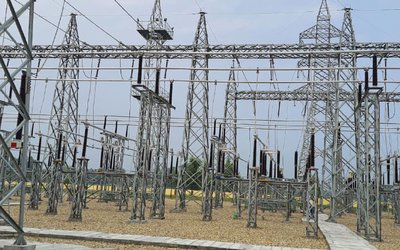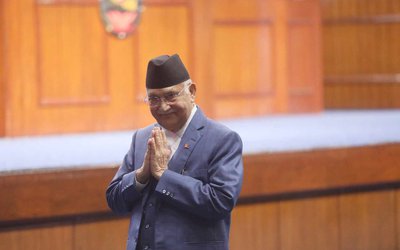Around the end of February this year a tragic story unfolded near the Thorong La Pass ( 5400m) that will sadly be repeated again if the awareness of altitude sickness is not highlightedfor the new Nepali community of high altitude sojourners. Seven young Nepalis (in a kind of a class reunion) went trekking around the Annapurna Circuit. Unfortunately near the Pass, they were caught in a blizzard, and one of them lost their lives likely due to severe altitude sickness while others suffered from extreme hypothermia and frostbite. Deaths from altitude sickness and hypothermia are almost always 100 % preventable,and therein lies the rub when someone ( especially young) dies from this disease.
With amotorable jeep road continuing up the Marsyangdi River from Beshishar ( 200m) in Lamjung to Chame ( 2900m) in Manang,increasing numbers of local Nepalis, who may be ill prepared for trekking and climbing are the vulnerable grouptraveling the Annapurna circuit. Unlike many tourists and trekkers most of us Nepalis approach high altitude travel in a very cavalier fashion. For example,most will not have read up on altitude sickness, hypothermia, and preparation for different weather conditions. And then when tragedy strikeswe will be in a “KeGarne”( what to do?) or “Lau Za” ( oops)frame of mind, the typical fatalistic attitude that pervades our daily lives.
Many young Nepali adventurers arrive by jeep to Chame in Manang, they then keep ascending by riding behind on hired motorbikes to the main town of Manang at about 3500 m where they arrive in two days from Kathmandu. Then in another 2 days they may well be attempting to go over the 54000 m Thorong La Pass. This incredibly fast rate of ascent at altitude is clearly a strong risk factor for altitude sickness as it does not give the body enough time to acclimatize.
We do not know what the travel schedule nor the ascent profile ( how fast did they gain altitude?) or other details about the ill- fated group of seven young Nepalis mentioned above, and we sincerely hope that those undergoing treatment recover promptly. But attempting a 5500m Pass in 4 days ( Kathmandu is 1300 m), is dangerous for anyone, even for the mighty Sherpas. In addition it has been reported that many young Nepalis who attempt this Pass are in a celebratory mood and drink alcohol to their heart’s content just before the Pass. In fact rumor has it that many hoteliers in the region prefer Nepalis to Western tourists because the Nepalis rack up a huge “booze bill” that other trekkers do not.
If altitude sickness is classically described as a“hangover” (even without drinking alcohol), imagine then the effects of excessive alcohol drinking when you already may have symptoms of altitude sickness because you ascended rapidly (byjeep and motor cycle). Alcohol has another detrimental effect at altitude which is that it causes people to breath less at high altitude ( hypoventilation). Hyperventilation ( breathing more but unbeknownst to yourself), the opposite of hypoventilation, is the cornerstone of acclimatization at high altitude; so anything that puts the brake on ventilation is potentially very harmful and counterproductive for acclimatization at high altitude.
Such valuable piece of advice and information is lacking amongst many young Nepalis going to high altitude.A pdf file about travel to high altitude which Dr. ManirajNeupane of the Mountain Medicine Society of Nepal has painstakingly translated into Nepali is freely available and very helpful( http://mmsnnepal.files.wordpress.com/2010/09/nepali_translation_of_travel_at_high_altitude_pdf.pdf) Checking the website of the International Society of Mountain Medicine ( ISMM), www.ismm.org, the Mountain Medicine Society of Nepal ( MMSN) mmsn.org.np, or the Himalayan Rescue website, www.himalayanrescue.orgwill also be very helpful before venturing into the Himalayas.

Buddha Basnyat MD
Buddha Basnyat, MD, MSc, FACP, FRCP, Director of the Oxford University Clinical Research Unit-Patan Academy of Health Sciences, Kathmandu.
- Altitude Sickness
- Feb 20, 2018
- Post-earthquake Nepal: The Way Forward
- Dec 13, 2015
- The Annapurna Sanctuary
- Nov 29, 2015
- Diarrhea at the Summit
- Nov 08, 2015
- Altitude Sickness ( AMS, HAPE, HACE)
- Oct 15, 2015















